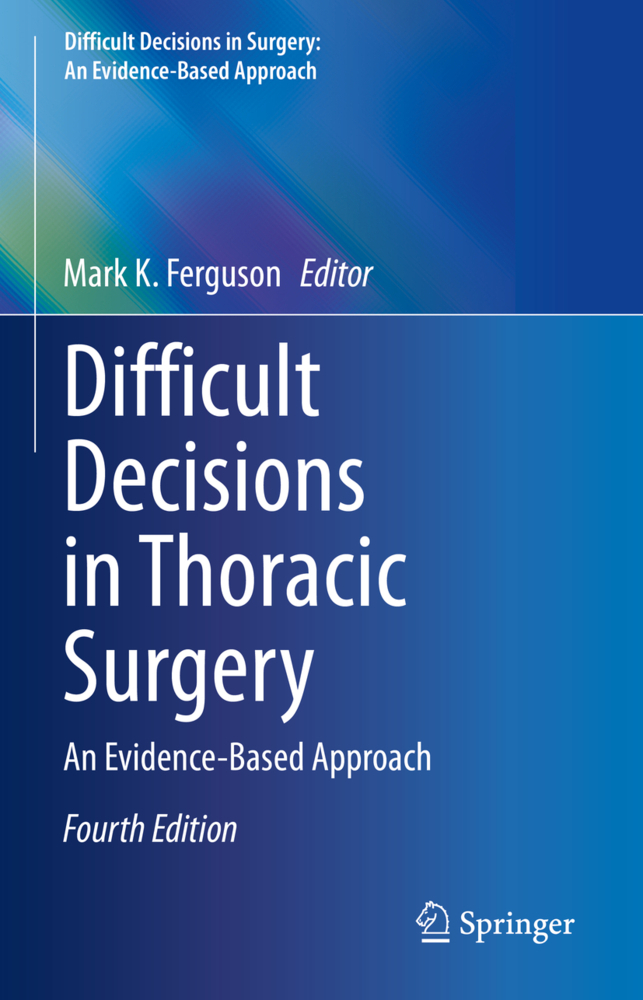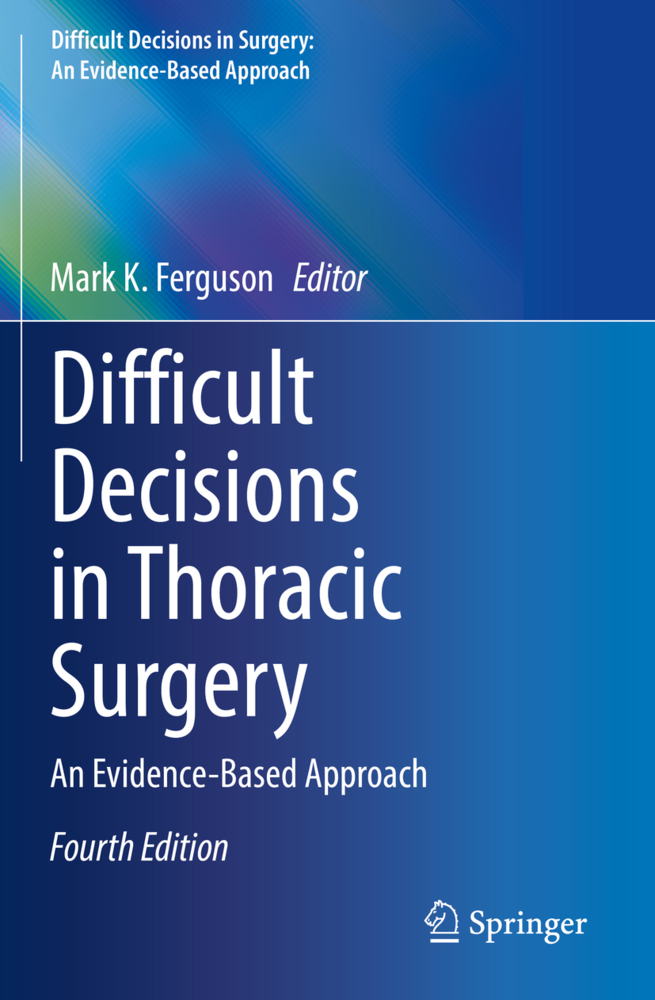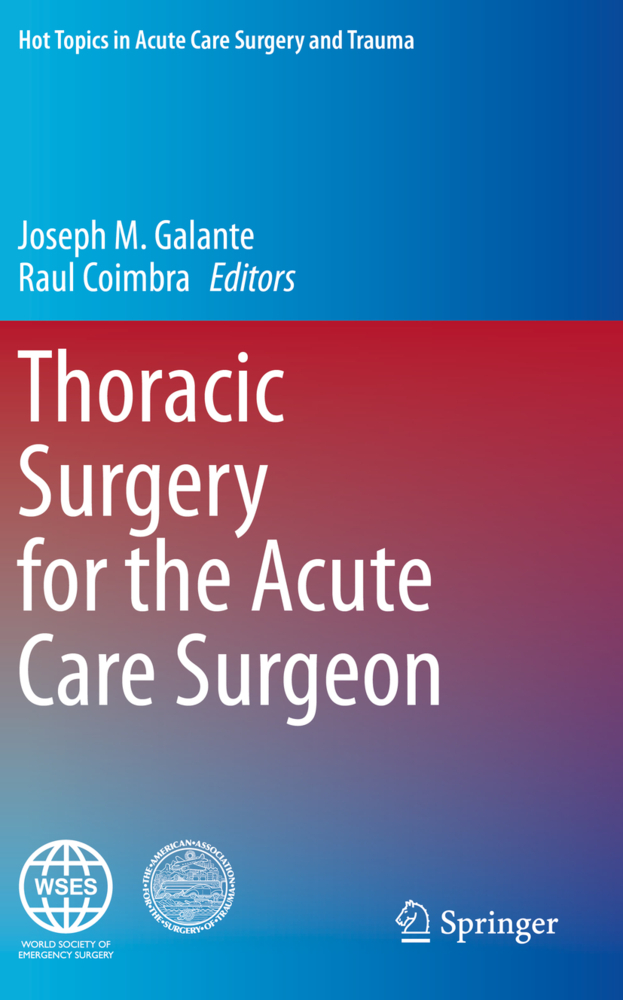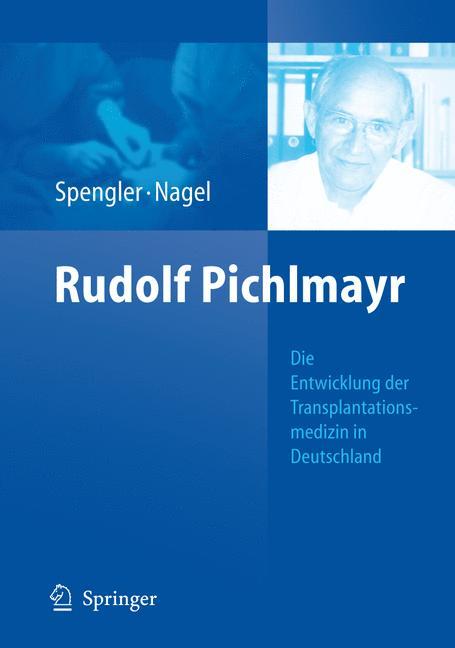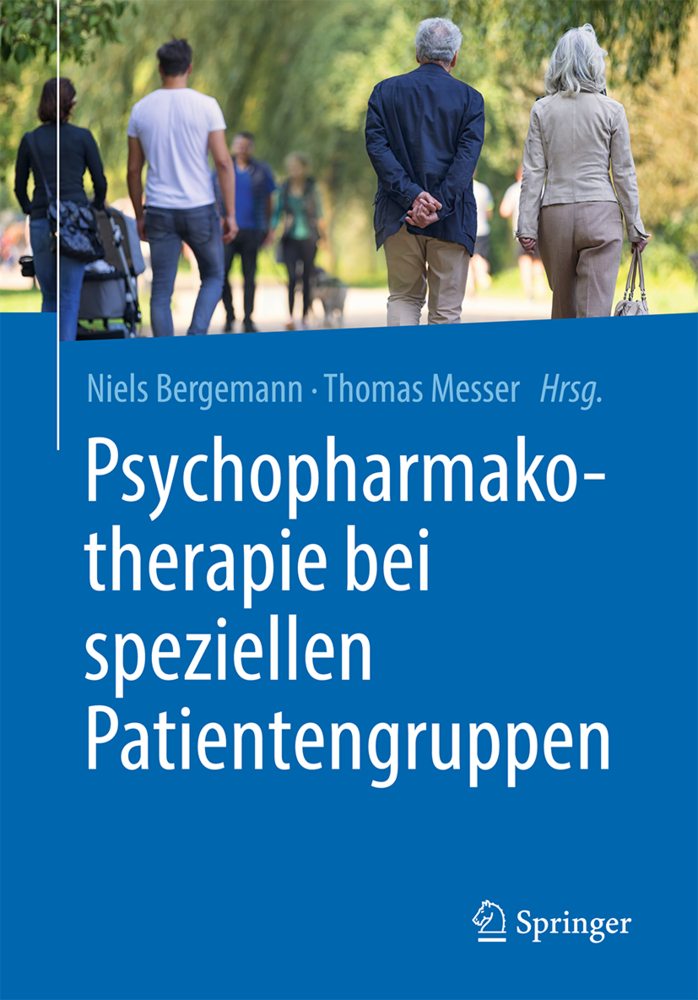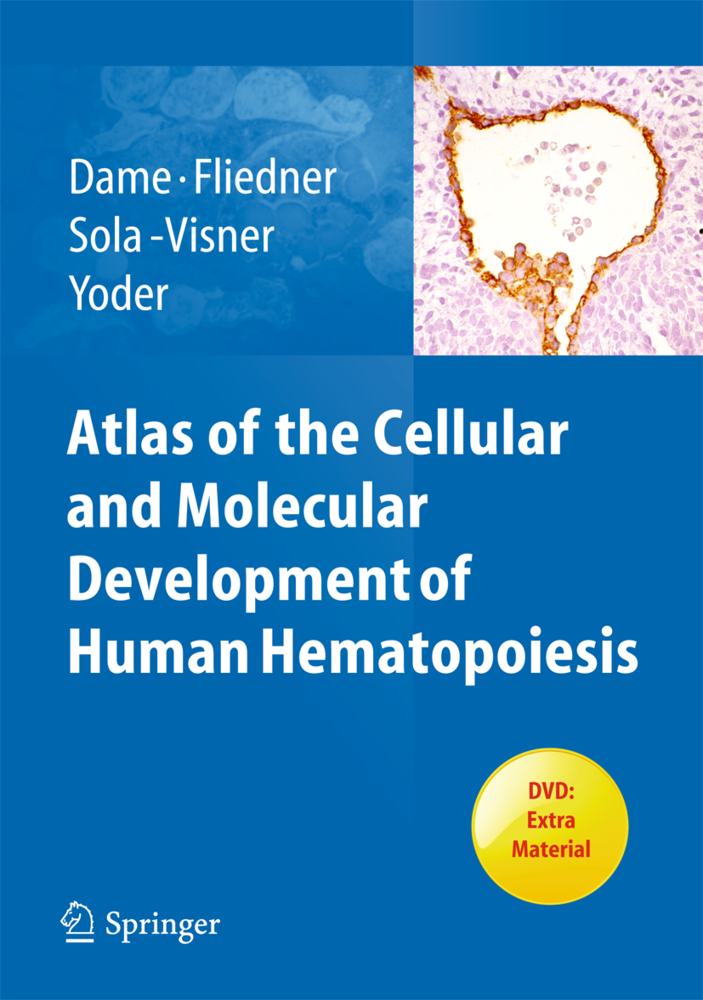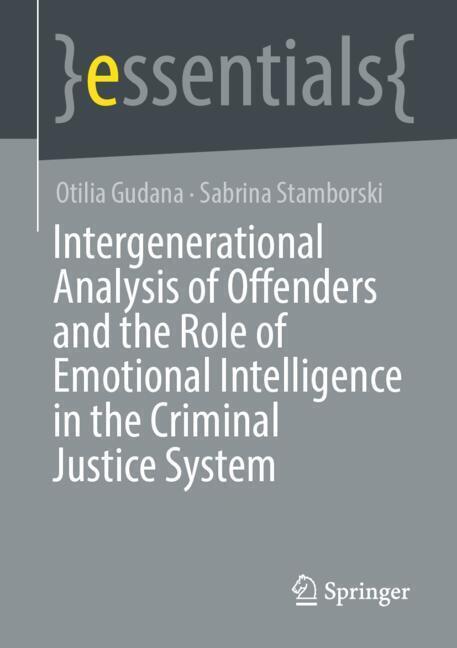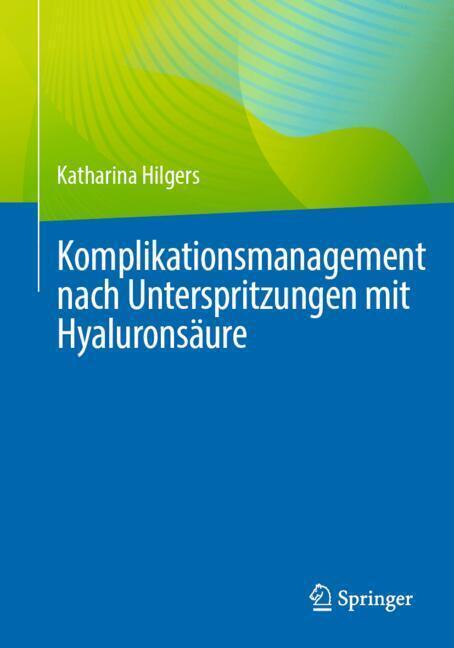Difficult Decisions in Thoracic Surgery
This updated volume provides a practical guide to decision making within thoracic surgery. Focussed chapters contain pithy analyses and recommendations that allow useful information to be identified at a glance. All new chapters bring insight into the challenges faced operating on the lung, esophagus, diaphragm, airway, pleaura, mediastinum, and chest wall.
Difficult Decisions in Thoracic Surgery aims to help the reader navigate the complexities of thoracic surgery through clearly formatted and evidence-based chapters. The book is relevant to practicing and trainee surgeons, as well as medical professionals working within thoracic surgery.
1. Introduction
2. Evidence based medicine: levels of evidence and evaluation systems
3. Decision analytic techniques and other decision processes
4. Decision making - the surgeon's perspective
5. Decision making - the patient's perspective
6. EBUS vs mediastinoscopy for initial pathologic mediastinal staging in NSCLC
7. Is preoperative smoking cessation for lung resection patients effective in reducing surgical morbidity
8. Is low tech as good as high tech exercise testing in assessing healthy candidates for lung resection
9. Does assessment of frailty and sarcopenia in lung resection candidates affect oatient selection
10. Can frailty and sarcopenia be mitigated in lung resection candidates
11. Is antibiotic prophylaxis necessary for major lung resection
12. Uniportal vs multiportal VATS lobectomy
13. Robotic vs VATS for major lung resection
14. Does intrapleural therapy for persistent postoperative air leak reduce air leak duration
15. Segmentectomy vs lobectomy in patients with good pulmonary function
16. Is resection of persistent N2 disease after induction therapy effective
17. N2 disease discovered at the time of lung resection - resect or abort?
18. Is lung resection safe after immunotherapy
19. Is an enhanced recovery programs for lobectomy patients effective in improving surgical outcomes
20. Resection vs SBRT for stage I NSCLC in patients with good pulmonary function
21. Do endobronchial valves assist in resolution of postoperative persistent air leak
22. Is long-term surveillance effective after resection of stage I NSCLC
23. Does ECMO for lung failure in ICU patients improve survival
24. Does resection of oligometastatic disease in lung cancer patients improve survival
25. Is pulmonary metastasectomy effective in prolonging survival
26. Resection vs endoscopic therapy for T1bN0 esophageal adenocarcinoma
27. Does induction therapy for T2N0 esophageal adenocarcinoma improve survival
28. Do enhanced recovery programs for esophagectomy patients improve outcomes
29. Does jejunostomy after esophagectomy improve outcomes
30. Surgery vs definitive chemoradiotherapy for regionally advanced esophageal squamous cell cancer
31. Open vs robotic resection for esophageal adenocarcinoma
32. Two-field vs three-field lymphadenectomy for esophageal adenocarcinoma
33. Is resection of more nodes better for treating esophageal cancer
34. Salvage esophagectomy for persistent disease after definitive chemoradiotherapy
35. Early postoperative feeding after esophagectomy
36. Stent vs primary repair for esophageal perforation
37. Sump therapy vs stenting for esophageal anastomotic leak
38. Thoracoscopic vs endoscopic therapy for small submucosal esophageal tumors
39. Laparoscopic vs endoscopic therapy for achalasia
40. Laparoscopy or endoscopic therapy for recurrent symptoms from achalasia
41. Laparoscopy or thoracotomy for symptomatic recurrent paraesophageal hernia
42. Does diaphragm pacing for bilateral phrenic nerve paralysis improve function or quality of life
43. Does phrenic nerve reconstruction for unilateral diaphragm paralysis improve function or quality of life
44. Is plication for diaphragmatic eventration effective in improving function
45. Is temporary transvenous pacing effective in ventilator weaning
46. Does temporary diaphragm paralysis aid in eliminanting residual pleural space after lung resection
47. Is long-term stenting for benign airway obstruction effective
48. Are engineered tissues useful for tracheal reconstruction
49. Are positive margins acceptable in resection for low grade malignancies
50. Optimal management of posttransplant brochial stenosis - stenting or reoperation
51. Is tPA/Dnase therapy effective for managing pleural empyema
52. VATS vs open management of pleural empyema
53. Indewlling catheter vs chemical pleurodesis for symptomatic malignant pleural effusion
54. Extended pleurectomy sparing the diaphragm for malignant pleural mesothelioma
55. Quality of life: EPD vs EPP
56. Does thymectomy improve outcomes for myasthenia gravis
57. MRI for evaluation of suspected encapsulated thymoma
58. Lobectomy vs thymectomy for encapsulated thymoma
59. Robotic vs VATS thymectomy for thymoma
60. Resection of mediastinal parathyroid adenomas
61. Thymectomy in the setting of pleural metastases
62. Sympathectomy for malignant ventricular arrhythmias
63. Extent of surgery for palmar hyperhidrosis
64. Synthetic vs biologic reconstruction of bony chest wall defects
65. Traumatic rib fracture: conservative therapy or surgical fixation?
66. Is surgical management of flail chest effective
67. Epidural vs regional blocks for VATS and thoracotomy
68. Pectus deformities in adults - when is surgery indicated?
69. Pectus deformities in adults - Nuss bar vs open repair.
Ferguson, Mark K
| ISBN | 978-3-030-47403-4 |
|---|---|
| Artikelnummer | 9783030474034 |
| Medientyp | Buch |
| Auflage | 4. Aufl. |
| Copyrightjahr | 2020 |
| Verlag | Springer, Berlin |
| Umfang | XV, 705 Seiten |
| Abbildungen | XV, 705 p. 19 illus., 17 illus. in color. |
| Sprache | Englisch |

